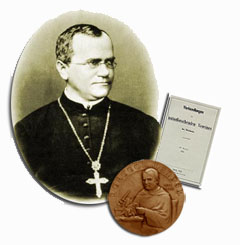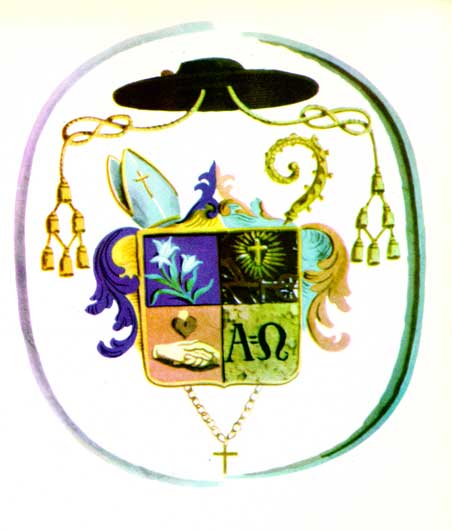About Gregor Johann Mendel, O.S.A.

Gregor Johann Mendel was born on 22 July 1822 in Hynčice, Moravia, in what is now the Czech Republic. He attended local schools and in 1843, he entered the Augustinian Order at St. Thomas Monastery in Brünn. He began his theological studies at the Brünn Theological College and was ordained to the priesthood on 6 August 1847.
The Augustinian Order was established in Moravia in 1350, and in Mendel’s time St. Thomas Monastery was a center of creative interest in the sciences and culture. Its members included well-known philosophers, a musicologist, mathematicians, mineralogists and botanists who were heavily involved in scientific research and teaching. The magnificent library contained precious manuscripts and incunabula, as well as textbooks dealing with problems in the natural sciences. The monastery also held a mineralogical collection, an experimental botanical garden and a herbarium. It was in this atmosphere, Mendel later wrote, that his preference for the natural sciences was developed.
Mendel the Teacher
After his ordination, Mendel was assigned to pastoral duties, but it soon became apparent that he was more suited to teaching. In 1849, he was assigned to a secondary school in the city of Znaim and was well received by the students. When he took the qualifying state examination for teacher certification, however, he failed. Recognizing that Mendel was largely self-taught, one of his examiners recommended that he be sent for further studies in the natural sciences. The abbot agreed, and Mendel was sent to the University of Vienna in order to improve his preparation for the reexamination. Mendel spent two years in Vienna (1851 – 1853) where he attended lectures and seminars in the natural sciences and mathematics. It was there that he acquired the empirical, methodological and scientific research skills which he was to apply to his later investigations. Mendel returned to teaching in Brünn in 1854 but when, two years later, he again attempted the state certification examination he became ill, most likely as a result of debilitating test anxiety, and withdrew. He did not pursue the examination further but continued to teach part-time and devote himself to research.
Mendel the Researcher
Mendel began his experiments soon after his return from Vienna. Using thirty-four different kinds of peas of the genus Pisum which had been tested for their genetic purity, he tried to determine whether it was possible to obtain new variants by crossbreeding. Peas were carefully chosen because pollination could be easily controlled and normally pea plants are self-fertilizing. His research involved careful planning, necessitated the use of thousands of experimental plants, and extended over seven years. Mendel established two principles of heredity that are now known as the law of segregation and the law of independent assortment, thereby proving the existence of paired elementary units of heredity and establishing the statistical laws governing them. He became the first to understand the importance of a statistical investigation and to apply a knowledge of mathematics to a biological problem.
Mendel's findings on plant hybridization were presented in two lectures before the Society for the Study of the Natural Sciences in Brünn in 1865. His paper, Versuche über Pflanzen-Hybriden("Experiments in Plant Hybridization,") was published in the society's Proceedings in 1866 and sent to 133 other associations of natural scientists and to the more important libraries in a number of different countries. Mendel corresponded with Karl von Nӓgeli who encouraged him to carry out his next series of experiments on various species of the genus Hieracium (hawkweed). Mendel was not able to replicate his findings as the hawkweed reproduces asexually, producing clones of the parent. In 1869 he published a report that hinted that the results were different from those obtained for Pisum, but left the problem open for further research. He also continued to conduct research in horticulture, apiculture, meteorology, and astronomy. His Pisum work, however, was largely ignored until, in the spring of 1900, three botanists, Hugo de Vries (Holland), Karl Correns (Germany) and E. von Tschermak (Austria) reported independent verifications of Mendel’s work which amounted to a rediscovery of his first principle.
On 30 March 1868, Mendel was elected abbot of St. Thomas Monastery. His new duties involved many civic responsibilities that took him away from his scientific work. He maintained a serene confidence despite the lack of recognition his work received. Just before his death on 6 January 1884, he commented: “My scientific labors have brought me a great deal of satisfaction, and I am convinced that before long the entire world will praise the result of these labors.” His serene confidence despite the lack of recognition his work received, was to be vindicated. Mendel remains one of the great biologists of the nineteenth century and the inspiration for one of the most challenging sciences of our time – genetics.


